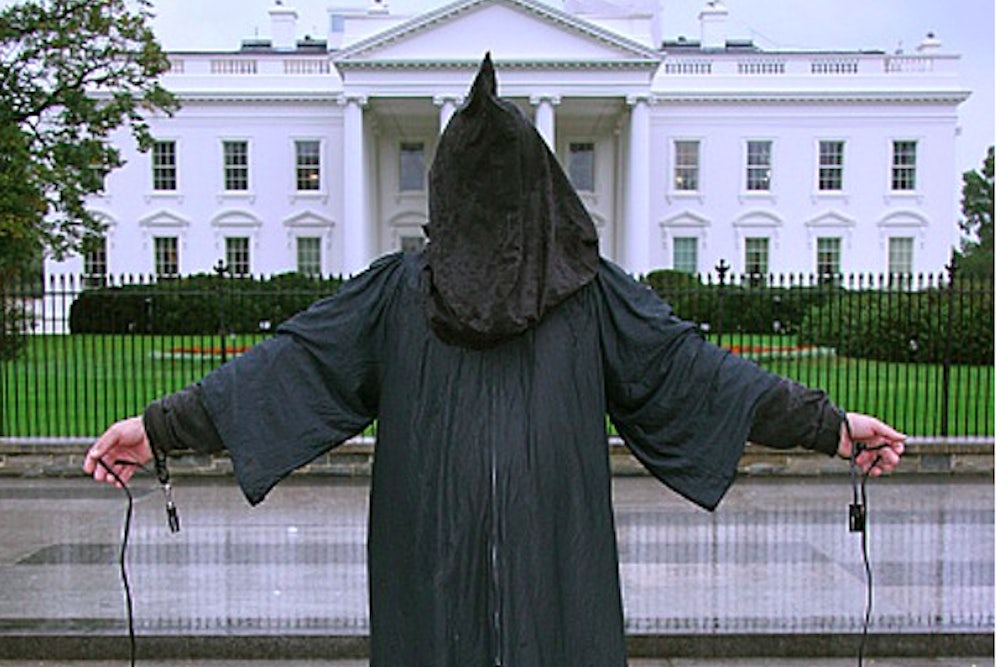The Guardian’s Spencer Ackerman is reporting that the CIA regularly stripped and photographed individuals detained through its “extraordinary rendition” program. The naked photographs—which one former intelligence official described as “very gruesome”—were intended to induce “psychological discomfort,” in the words of a declassified Justice Department memo, and establish that any lasting physical harm occurred after the detainees were transferred from CIA black sites to secret prisons infamous for their use of torture in cooperating countries.
Ackerman’s findings receive some substantiation from a footnote in the 2014 Senate Torture Report, but it’s possible that not even the full version, as yet undisclosed, details a practice that arguably constituted a form of torture unto itself. The Senate Intelligence Committee, Ackerman notes, “dealt overwhelmingly with the CIA’s detentions and interrogations, keeping the rendition program a secret.”
That we still do not know the full extent or nature of the crimes perpetrated makes Obama’s decision not to pursue—and indeed, impede—legal ramifications against the officials responsible all the more reprehensible. It’s one thing to reckon with the United States’s post-9/11 policies and decide that the country is better served Looking Forward, Not Back, like the 2008 campaign slogan said. But to preclude that reckoning entirely is another matter altogether. The more information escapes the veil of secrecy, the harder Obama’s choice will be to defend.
